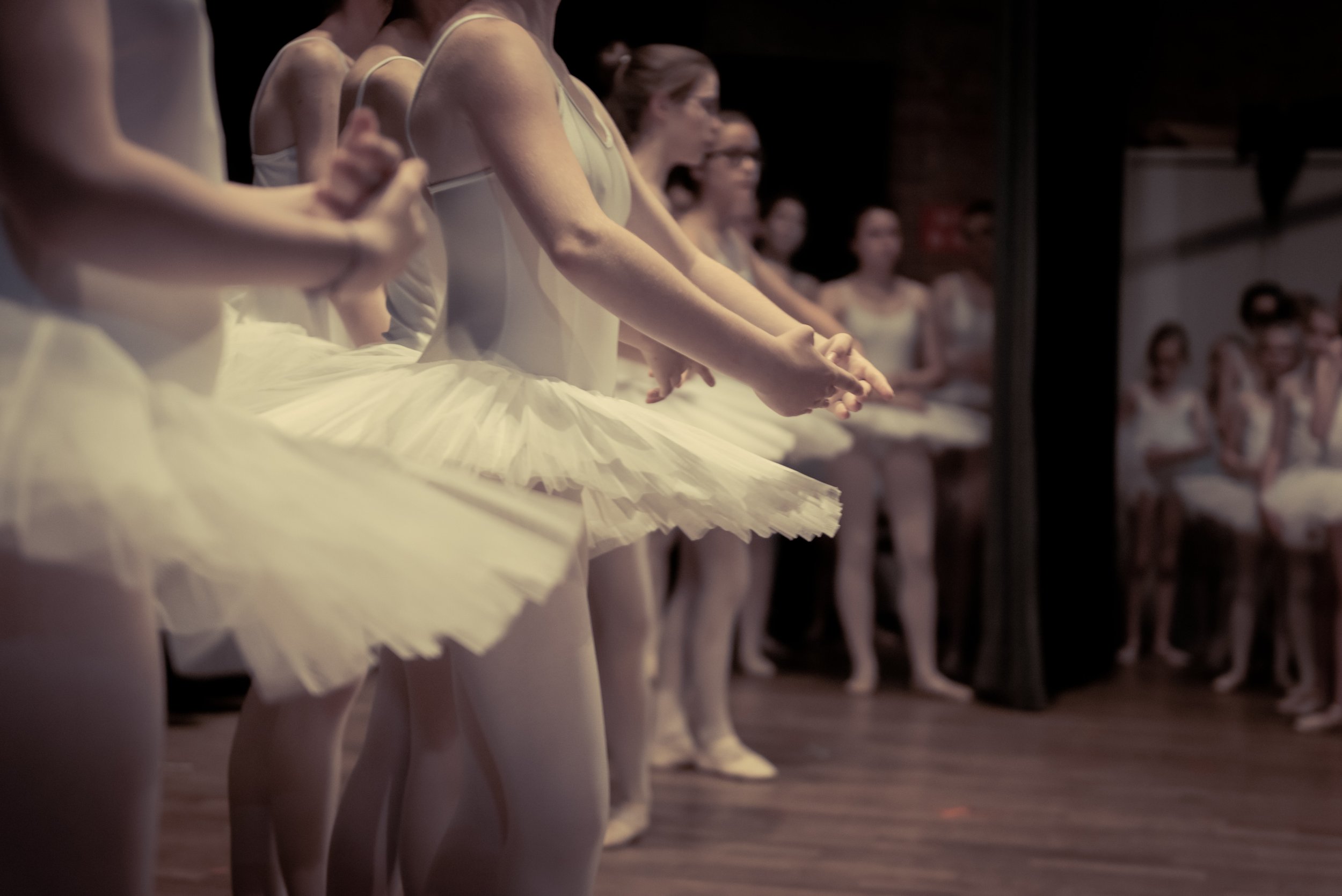Ballet Dreams: From the Stage to the Page
By Martha Anne Toll
I never made it anywhere near prima ballerina, but I’ve been obsessed with ballet since the age of eight. As a child, I’d lie in bed trying to fall asleep, imagining patterns of tutu-ed dancers intersecting in kaleidoscopic lines. I longed to dance into those sugar plum visions.
I adored my years of childhood ballet classes. Lacking the words, I understood barre warm-ups to be the ultimate full-bodied experience—from waking up toes to feet to legs to arms to fingers, angling the head in tandem—in a repeating loop of sweat and focus.
Like I imbibed the knowledge that thigh control was necessary to execute a meaningful plié—one slow and careful enough to hone muscles and prevent jumping injuries—I absorbed the music through ballet-magic osmosis. Today, if I hear music that was played in ballet class, I am instantly transported to the studio, not as a casual observer, but as a nine-year-old at the barre, practicing a specific ronde de jambe or circle of frappés.
Sadly, my passion did nothing to make my arch bigger, my extension higher, my back straighter, or my body more flexible. It was clear by age 10 that I lacked any of the prerequisites for a professional ballerina. When my classmates were invited to audition for the children’s parts in The Nutcracker, I was not considered, not even for running around in a large mouse head. Finally, the ballet school refused to advance me. Summer ended, and they dug in their heels. They would not permit me to enroll in the next level class. I viewed it as an epic failure.
That could have been the end of the story, but it wasn’t. I was 12 and imprinted for life. I continued attending ballet performances, no matter where I lived, or how busy I was.
I went to college and law school, got married, had a family, and worked in social justice for more than two decades. And then ballerina Katya Symanova arose in my imagination, insisted on being written, and I started what became my debut novel, Three Muses.
From the outset, I had a visceral understanding of Katya. I felt her demands and needs. Her experience was not mine, but I was awed by her dedication and zeal. Katy-a loved ballet, initially as an intensely disciplined child and then as an intensely disciplined woman striving her way into her art.
I had to work alongside Katya to find my way into the words. At my writing desk, I joined Katya in the studio when she was seven, 15, and 20. We did barre warmups together—she and I—greeting her muscles like sculptors greet marble, or painters their oils. Over time, I discovered that Katya loved ballet because she transformed into her most expressive self when she danced and she needed that expression to live.
Katya made other demands on me, one of which was to create ballets, or “choreograph.” In ballet parlance, a choreographer creates a ballet “on” a dancer. In my book, Katya’s choreographer/lover Boris Yanakov makes ballets on her. Their relationship is fraught with unhealthy power and sexual dynamics. Nevertheless—or because of this—the two manage to create dances together. Their collaboration is germane to Katya’s sense of herself and her art, despite their private trouble. And so, Katya insisted that I learn this part of the profession.
Rather than sprinting to the library, Katya suggested I mine a trove of memories that had equal prominence to those of my childhood dance lessons: watching company rehearsals. The Pennsylvania Ballet (now Philadelphia Ballet) was often at work before my ballet classes began. I would arrive early, stand on tiptoe, and peer into the window of the rehearsal studio. I was mesmerized by the professionals dressed in their rattiest clothing; leotards torn at the neck to expose more flesh and bone; pilled, mismatched leg warmers; shredded pointe shoes; and peeling plastic pants to increase perspiration.
The choreographer would sit backward in a director’s chair in front of a wall of mirrors, as a piano player pounded away in the corner on the broken-down baby grand. He (the choreographer was always a “he”) gave orders and demanded endless repetition, jumping from his chair to fix legs, adjust necklines, demonstrate, or, if he was too old, fling his hands and arms around to indicate his intentions.
The process was as painstaking as it was arduous. I could not get enough of it.
Decades later, when I began to access the memories of that steamy room filled with men and women at the height of their physical prowess, I found power in the discipline it takes to become a dance artist—the grinding repetition, the iron will, the brute strength, and physical risk. Katya gave that to me.
The next step was to communicate this process on the page. I discovered I couldn’t do any advance planning or outlining. Instead, I had to work alongside Katya in the rehearsal room as Yanakov described his nascent concept for a dance piece. The two listened to music, imagined scenery and lighting, and began to parse the steps. I had to shadow Katya as she and Yanakov developed combinations and Katya figured out how the corps would interact with the soloists.
To breathe life into these ballets, Katya had to perform them. And so, I stood next to Yanakov in the wings as he paced and trained his withering gaze on her. I watched her perform parts that were raw to the point of nakedness. I worried myself sick when her costume was too heavy or, heaven forbid, she tripped and fell leaping offstage.
Writing ballet choreography was necessary to inspire Three Muses. Ballet is the heart of Katya’s life and a key to the story. I figured out a way to choreograph from scratch by spending time with Katya in the rehearsal studio and summoning new pieces over which we could take ownership. We had to break the pieces down into their component parts—years of preparation in class, endless work in the rehearsal room, the costumes, the lights, the music, the fraught relationship between dancer and choreographer, and dancer and audience.
Was there another way? I am certain there was. But I am also sure that I could not have written this book without my childhood passion for ballet, and my early experience flaming out. I don’t think Katya, as a little girl, would have peered into the rehearsal studio mesmerized by professional dancers at work if I hadn’t had that same opportunity. And most of all, I doubt she would have become the accomplished and conflicted ballerina she grew into on the pages of Three Muses without the two of us spending nearly a decade writing this book.
++
Martha Anne Toll’s debut novel, Three Muses, won the Petrichor Prize for Finely Crafted Fiction and is now available. Martha is a frequent contributor to NPR Books and to The Millions. Please visit her at marthaannetoll.com and tweet to her @Marthaannetoll.


